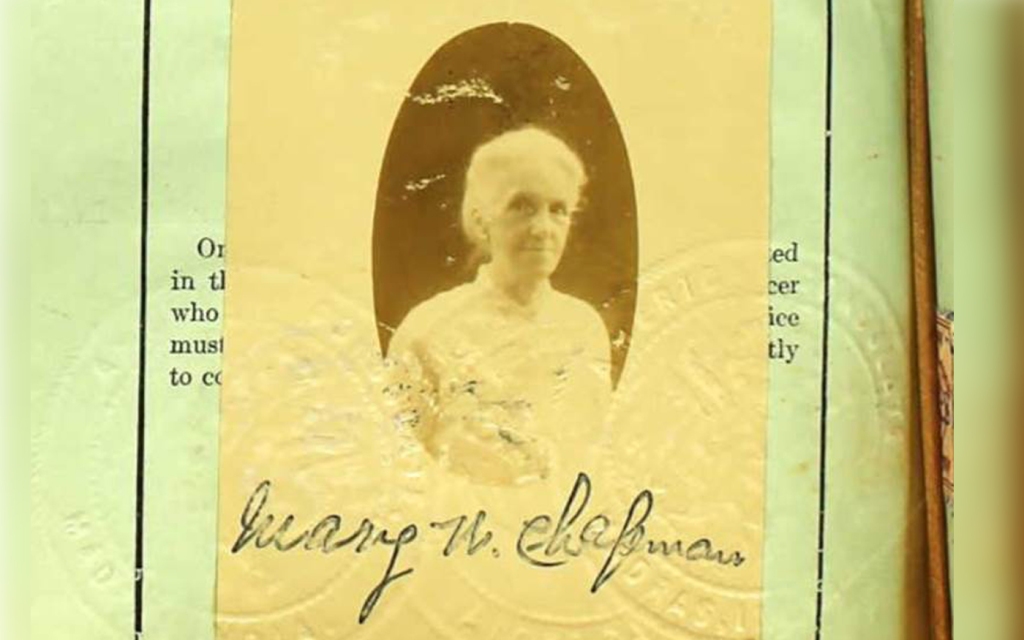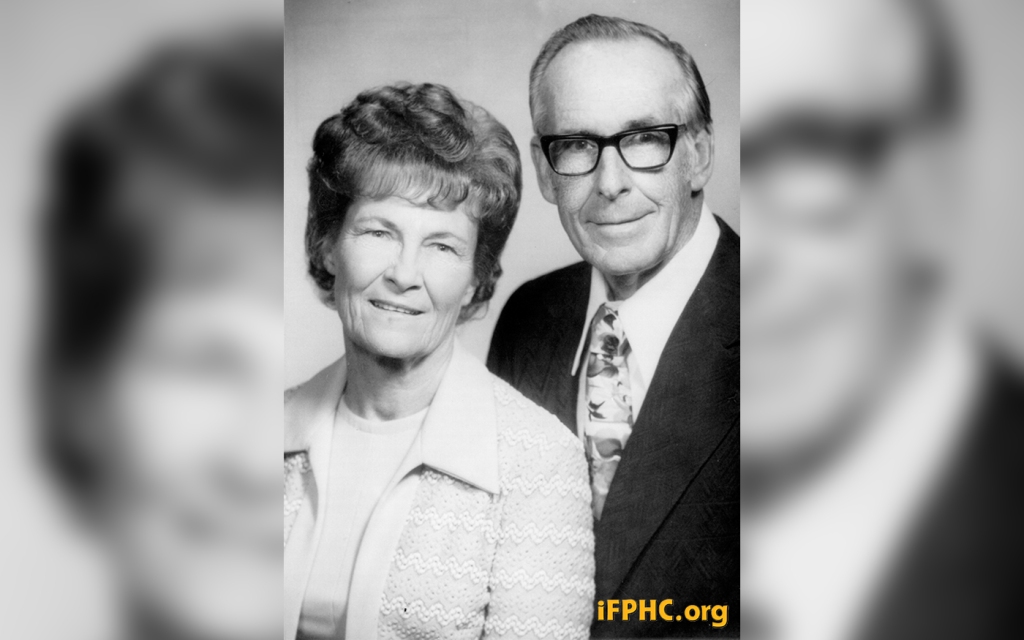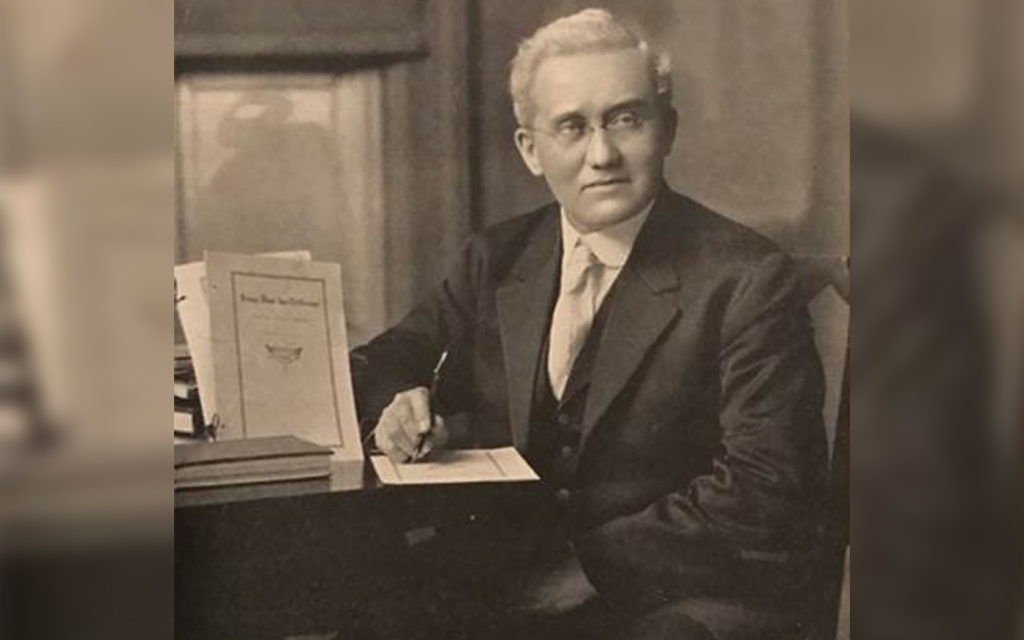
This Week in AG History — May 17, 1964
By Glenn W. Gohr
Originally published on AG News, 16 May 2024
The Assemblies of God celebrated its 50th anniversary in 1964. During that year, a number of pioneers of the faith shared their testimonies in the Pentecostal Evangel. One of these was J. Edgar Barrick (1894-1983), who served as a pastor and missionary with the Assemblies of God.
Jacob Edgar Barrick was born in Shaw, West Virginia. He attended school and spent his childhood in Cross, West Virginia. Although he was raised in the Methodist Church, he did not come into contact with any Spirit-filled or Pentecostal people until 1913. At that time a revival was taking place in the Methodist Church at Kitzmiller, Maryland. He was living in another town, two miles away. Many people were attending the meetings, where people were encouraged to come to the altar to be saved and sanctified. This was no ordinary revival. Soon three Methodist preachers were filled with the Holy Spirit, along with some of the members of the church.
Barrick decided to attend one of the meetings, and as he sat in the service, one of the ministers began speaking in a strange language. Sitting directly in front of him was a young man, who when he heard the tongues speaking, he began to laugh. One of the ministers on the platform said to him, “Young man, this is the moving of God, and this is no place to laugh.” Barrick waited until the service ended, and then he walked back to the boarding house where he was staying. He never went back to that revival.
At the close of that revival, the deacon board of the church decided not to accept the speaking in tongues. This meant that those who had been filled with the Holy Spirit were no longer welcome to worship in the church. The small group of Spirit-baptized believers then started cottage prayer meetings, and the Lord began to bless and add to their numbers.
One night during a prayer meeting, a neighbor lady heard them praying and called the police. She said, “These people are praying for the fire to fall, and I do not want the fire to burn my house.” The police came, arrested the men, and took them to jail, but allowed the women to finish the prayer meeting. The men sat in jail and prayed and sang praises to God all through the night. The next morning, they were released to await a court trial which ended with these Spirit-filled men winning the case.
In 1914, three ministers, A.B. Cox, R.A. McCauley, and D.R. Moreland, came to the town to hold a tent meeting. It was not long before the tent was filled with people every night, many of whom came out of curiosity. One evening a large group of young people, including Barrick, decided to go down to the tent meeting. They had heard that strange things were happening, so they stood outside the first night and listened. The second night they decided to go inside as the singing and testimonies had attracted their attention. It was not long before they were all under deep conviction.
In two weeks, 30 of the young people were saved and filled with the Holy Spirit. People came as far as 15 miles by horse and buggy to witness the outpouring of God’s Sprit. By the close of this tent revival, around 125 people had been saved, and many were filled with the Holy Spirit.
The night Edgar Barrick was baptized with the Holy Spirit at that meeting, he felt a call to preach the gospel. He tried to reason with God. He told Him he would be happy just to work in the church. But the burden continued, and in the fall of 1917, he answered the call by entering Beulah Heights Bible Training Institute in North Bergen, New Jersey, where he graduated in 1919.
One evening, three weeks after he entered school at Beulah Heights, he was praying with some other young men in the auditorium before going to their rooms to study, and the Lord spoke again to Barrick’s heart. At that time Barrick had a vision of the heathen villages of India, and he sensed God asking him if he would be willing to go. Having already made a commitment to attend Bible school, he was ready to say “Yes” to the call to the mission field.
Just a few days before graduation from Bible school, Barrick received a letter asking if he would pastor his home church in Kitzmiller, Maryland. He served his home church for over a year, and then he was called to pastor a church in Cumberland, Maryland.
About this time, Edgar Barrick married Virginia May Twigg on Sept. 25, 1918, at Cumberland, Maryland. Upon graduation from Bible school, Barrick received a preaching license from the Eastern District of the Assemblies of God in 1919, when Robert A. Brown was chairman. He later was ordained by the Potomac District on Jan. 29, 1920, while he was pastoring in Kitzmiller. His wife, Virginia, was licensed with the Potomac District in 1921.
Both of the Barricks felt called into missions to India. They were appointed as Assemblies of God missionaries to North India on Sept. 27, 1921. By April 16, 1922, Barrick, his wife, and their 2-year-old son were in India. Two more children were born while they were on the mission field.
Times in India were not easy. They both attended language school, and a few months after their arrival, Edgar came down with a fever which kept him bedridden for nine weeks. After much prayer, he recovered. They first worked with missionaries Almyra and Olga Aston at Bara Banki.
In a missionary report in April 1923, Barrick said, “Words cannot be found to express the need in the many villages as we see it from day to day. Hundreds of poor, starving, diseased children in each village, seemingly left to make their way through life the best they can.”
The native homes were made of mud with grass for a roof. The Barricks were determined to share the gospel in this needy mission field. “Yet through these conditions we are glad that the story of the Cross is listened to with interest, and we believe that some seed is falling into good ground,” he wrote.
By May of 1923, the Barricks had opened a new mission station at Rae Bareli, where they worked with missionary Paul Andreasen. Some of the hardships they faced included heavy sandstorms and the Bubonic Plague among the people they ministered to. They also endured flooding during the rainy season.
A 1924 report by the Barricks stated in part: “It takes much patience, labor, and wisdom to deal with these dear people. We were hindered in the beginning for several months on account of sickness, but we still feel encouraged to press on and do our best for Him.”
In June of 1925, Barrick reported that beginning in March he became sick with smallpox. He was dangerously ill and said, “This of course cast a heavy gloom over our home as our thought went back to our missionaries who have gone home to be with Jesus through this dreadful disease.”
Telegrams were sent out for the saints to pray. W.K. Norton responded to this call and secured a capable nurse from Lucknow to help with his care. The nurse said there was little hope of recovery, for he had a very severe form of the disease.
While his fever was raging, Barrick felt the Lord speak to his heart: “This sickness is not unto death, but for the glory of God.” At one point Barrick was almost totally covered with smallpox, including his mouth and tongue. But around his eyes there were no pox. Otherwise, he might have suffered blindness.
Barrick said many of the townspeople prayed for him, including some Muslims and Hindus.
“One of the native men who came to see me asked if I wasn’t ready to curse India for putting this disease upon me,” Barrick recalled. He responded: “No, it only makes me love her more, and puts a deeper longing in my heart to see her people turn to a Christ who is able to save them from sin.” Miraculously, he recovered.
In 1933 Barrick reported that he had been ministering in Moghul Sarai, India. He wrote, “The Lord has blessed our efforts in this new field. Our congregation here at the station has increased from 12 people to nearly 50 in the five months we have been here.”
Another report in 1938 said that they had been sharing printed gospel tracts with many people who came to the train station. There were 36 passenger trains that would pass through the town every 24 hours. Many of the people were receptive to the gospel. After four and a half years at this mission station, his congregation in a little chapel building had grown to 65 people.
The Barricks spent 38 years as missionaries in India, and it all began when some men of God came to hold a Pentecostal tent meeting in Barrick’s hometown.
Barrick said, “I thank God for that night in 1914 when, at the age of 19, I was saved in that tent meeting.” Seven nights later he was baptized in the Holy Spirit in the dining room of the home where he was staying. Barrick said, “During that time, the Lord honored me by calling me to preach the gospel. No greater privilege can come to anyone.”
Read “I Remember,” by J. Edgar Barrick, on page 9 of the May 17, 1964, issue of the Pentecostal Evangel.
Also featured in this issue:
• “College and Christian Dynamics,” by J. Robert Ashcroft
• “Revival at Riverside,” by Alton C. Smith
And many more!
Click here to read this issue now.
Pentecostal Evangel archived editions courtesy of the Flower Pentecostal Heritage Center.
Do you have Pentecostal historical materials that should be preserved? Please consider depositing these materials at the Flower Pentecostal Heritage Center (FPHC). The FPHC, located in the Assemblies of God national offices, is the largest Pentecostal archive in the world. We would like to preserve and make your treasures accessible to those who write the history books.
Flower Pentecostal Heritage Center
1445 North Boonville Avenue
Springfield, Missouri 65802 USA
Phone: 417.862.1447 ext. 4400
Toll Free: 877.840.5200
Email: archives@ag.org
Website: https://ifphc.org/











